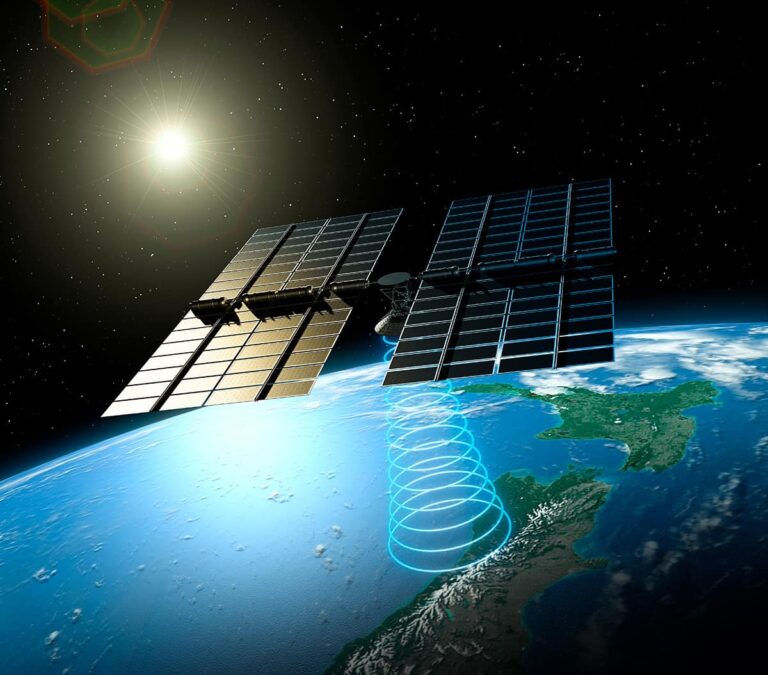Space-based solar power: could beaming sunlight back to Earth meet our energy needs?

The notion of capturing sunlight in space and beaming it to Earth has long been the stuff of science fiction. But as Jon Cartwright discovers, governments around the world are now taking “space-based solar power” seriously as a potential solution to our energy needs.
The theoretical physicist Freeman Dyson once imagined an alien civilization that was so advanced that it had surrounded its parent star with a giant, artificial shell. The inner surface of this “Dyson sphere” would capture solar radiation and transfer it towards collection points, where it would be converted into usable energy. Such a notion remains science fiction, but could a similar principle be used at a much smaller scale to harness the power of our own Sun?
After all, beyond the clouds, in the nightless blaze of near-Earth space, there is more uninterrupted solar power than humanity could realistically require for centuries to come. That’s why a group of scientists and engineers has, for more than 50 years, been dreaming up techniques to capture this energy in space and beam it back to ground.
“Space-based solar power”, as it’s known, has two huge benefits over traditional methods for tapping into the Sun and the wind. First, putting a sunlight-capturing satellite in space means we wouldn’t need to cover vast swathes of land on Earth with solar panels and wind farms. Second, we’d have an ample supply of energy even when, despite local weather conditions, it’s overcast or the wind has petered out.
And that’s the trouble with solar energy and wind power here on Earth: they can never meet our energy demands on a consistent basis, even if greatly expanded. Researchers at the University of Nottingham estimated last year that, if the UK were to rely totally on these renewable sources, the country would need to store more than 65 terawatt-hours of energy. That would cost over £170bn, more than twice that of the country’s forthcoming high-speed rail network (Energies 14 8524).
Most efforts to realize space-based solar power have, unfortunately, hit seemingly intractable technical and economic problems. But times are changing. Innovative satellite designs, as well as much lower launch costs, are suddenly making space-based solar power seem like a realistic solution. Japan has written it into law as a national goal, while the European Space Agency has put out a call for ideas. China and the US are both building test facilities.
Meanwhile, a consultation published by the UK government in 2021 concluded that space-based solar power is technically and economically feasible. Tantalizingly, it reckoned that this technological solution could be put into practice 10 years before the 2050 “net zero” goal of the Intergovernmental Panel on Climate Change. So is space-based solar power the answer to our climate’s woes? And if so, what’s preventing it from becoming a reality?
Space dreams
The original concept of solar power from space was dreamt up in 1968 by Peter Glaser, a US engineer at the consultancy Arthur D Little. He envisaged placing a huge disc-shaped satellite in geostationary orbit some 36,000 km above the Earth (Science 162 857). The satellite, roughly 6 km in diameter, would be made of photovoltaic panels to collect sunlight and convert it into electrical energy. This energy would then be turned into microwaves using a tube amplifier and beamed to Earth via a 2 km-diameter transmitter.
It’s the only form of green, renewable energy with the potential to provide continuous, baseline electrical power.
Chris Rodenbeck, US Naval Research Laboratory
The beauty of microwaves is they don’t get absorbed by clouds here on Earth and so would pass largely (though not totally) unhindered through our atmosphere. Glaser envisaged them being collected by a fixed antenna 3 km in diameter, where they would be converted into electricity for the grid. “Although the use of satellites for conversion of solar energy may be several decades away,” he wrote, “it is possible to explore several aspects of the required technology as a guide to future developments.”
The initial reaction was positive in at least some quarters, with NASA awarding Glaser’s company, Arthur D Little, a contract for further study. Over the years, however, the conclusions of subsequent studies into space-based solar power have ranged from cautiously positive to outwardly negative.


